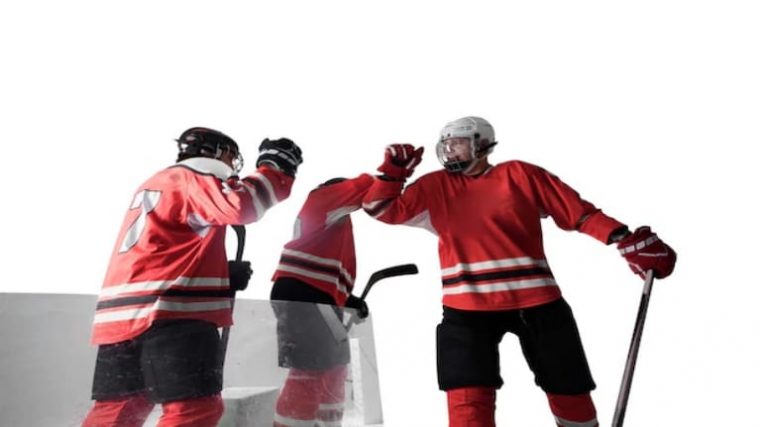What Is the Karate Belt Order? The System Explained
The world of martial arts, especially karate, is steeped in subculture and history. One of the most recognizable elements of karate is its belt system, which is a visible representation of a practitioner’s talent and progress. In this piece, I will delve into the complicated karate belt degrees, exploring the importance and the hierarchy of karate belt ranks, and the adventure every martial artist takes to climb the ladder of the belt levels.
Understanding Karate Belt Levels
Karate, like many other forms of martial arts, employs a ladder system of colored belts to signify a practitioner’s skill and ability. These karate belt tiers function as a roadmap, guiding martial artists from novice to expert. Each belt level represents the practitioner’s journey, with a unique set of competencies and know-how to be mastered before advancing to the following level.
- Karate Belts and Levels
The karate belt setup typically starts with white belts, signifying a blank canvas—a newbie with no exposure to the art. As practitioners develop, they pass via various hues, each representing deeper knowledge and mastery of karate techniques. Other colors consist of yellow, orange, green, blue, crimson, brown, and black, with each denoting a specific degree of information.
- Karate Belt Ranks
Within every color, there are further subdivisions known as ranks. For instance, a green belt may additionally have numerous ranks, each with its specific curriculum. These karate belt ranks upload granularity to the system, allowing for an extra evaluation of a practitioner’s skills. Achieving a better rank no longer only calls for technical talent but also demonstrates a more profound commitment to the philosophy and concepts of karate.
In the idea of getting a higher level belt in karate, rank extends beyond the bodily aspects of the martial art. It encompasses mental subjects, admiration for a way of life, and a dedication to personal growth. As practitioners climb the ranks, they emerge as ambassadors of the art, embodying its values both outside and inside the dojo.
Maintaining Karate Belts and Ranks
Maintaining one’s karate belts and ranks calls for continuous attempt and dedication. Regular education, participation in competitions, and adherence to the principles of martial arts are vital. Additionally, many dojos require practitioners to go through periodic tests to ensure they uphold the requirements related to their belt karate rank.
The journey through karate belts and ranks isn’t without its challenges. Each stage demands determination, perseverance, and willingness to push past one’s comfort region. However, the rewards are equally enormous. Beyond the physical competencies acquired, practitioners increase intellectual resilience, self-discipline, and a profound experience of recognition for both the artwork and their fellow martial artists.
Exploring the Significance of Each Karate Belt Level
The importance of every karate belt level extends past the shade itself. Let’s delve into the unique attributes related to every degree of the journey.
- White Belt – Embracing the Beginner’s Mindset
The white belt, often seen as the image of purity, represents the beginning of a martial artist’s voyage. It is not only a lack of coloration but a clean canvas geared up to soak up the awareness of the art. Practitioners at this degree are encouraged to embody the beginner’s mindset—open, curious, and keen to study. The recognition is at the basics, primary techniques, and know-how of the core concepts of karate.
- Yellow and Orange Belts – Nurturing Growth and Confidence
As practitioners progress to yellow and orange belts, they transition from beginners to assured rookies. These tiers are approximately constructing foundations and nurturing increase. The yellow belt indicates the first rays of daylight breaking through the darkness of the unknown. At the same time, the orange belt represents the warm temperature of self-belief radiating from within. It’s a degree in which practitioners begin to realize their capability and benefit from more profound know-how of the artwork’s philosophy.
- Green and Blue Belts – Developing Personal Style
The inexperienced and blue belt levels mark the improvement of a personal style inside the karate framework. At this point, practitioners circulate beyond imitating strategies and begin to feature their particular flair. These tiers emphasize fluidity and precision, encouraging martial artists to express themselves through their moves. It’s a degree where practitioners start to carve out their identity within the rich tapestry of karate.
- Purple Belt – Harnessing Advanced Techniques
Purple represents a degree to which practitioners harness superior techniques with finesse. The red belt signifies the practitioner’s ability to weave together diverse factors seamlessly. Precision and manipulation come to be paramount, and practitioners delve into the intricacies of kata—the choreographed styles that encapsulate the essence of karate. Purple belt holders are at the cusp of mastering their craft, poised to ascend to the pinnacle of their capabilities. 
- Brown Belt – The Art of Teaching
The brown belt is not only a mark of private accomplishment; it’s also an invitation to disseminate knowledge. At this stage, practitioners are frequently entrusted with leadership roles within the dojo. Mentoring decrease-ranked college students, supporting lessons, and contributing to the overall growth of the martial arts community are necessary parts of the brown belt adventure. It’s a phase wherein practitioners transition from being skilled people to becoming valuable individuals in the karate network.
- Black Belt – A New Beginning
Achieving a black belt is a giant fulfillment. However, it is not the end of the street—it is a brand-new start. Black belters are expected to maintain their knowledge of the journey, refine their abilities, and embody the very best ideas of karate. It’s a level at which practitioners not only master advanced techniques but also delve deeper into the philosophy of martial arts. The black belt is a symbol of duty, leadership, and a commitment to both personal and network increase.
The Evolution of Karate Belts and Ranks Over Time
The karate belt system, as we know it today, has undergone evolution and refinement over the years. Understanding the historical context provides insights into the richness of this subculture.
- Historical Roots of the Belt System
We can trace the origin of the karate belt set-up to the 18th century in Okinawa, Japan. Initially, there were two effective belt colors: white for novices and black for superior practitioners. As karate spread globally, the demand for a more structured development became apparent, which led to the creation of colored belts. This evolution allowed for a more nuanced and systematic method of ability development.
- Cultural Influences on Belt Colors
The choice of colors for karate belts isn’t always arbitrary; it is deeply rooted in Japanese subculture and symbolism. In Japanese subculture, white symbolizes purity and the beginning of an adventure, whereas black indicates the completion of that adventure. The intermediate colorings draw notions from nature—yellow for the sun, blue for the sky, and so on.
- Global Standardization of Belt Colors and Ranks
With the globalization of martial arts, there was a move towards standardization of belt shades and ranks. Organizations consisting of the World Karate Federation (WKF) and others have hooked up recommendations to ensure consistency in the progression of practitioners worldwide. This standardization facilitates communication and cooperation among martial artists, irrespective of their geographic vicinity or unique style of karate.
- Contemporary Challenges and Adaptations
In the current generation, martial arts schools face the challenge of balancing lifestyle with the evolving desires of practitioners. Some colleges have introduced extra colors or versions to the traditional belt system to house a broader variety of skill stages. The secret is to strike a balance between keeping the wealthy history of karate and adapting to the numerous wishes of an international community.
Maintaining Physical and Mental Well-being Throughout the Karate Journey
The journey through karate belts and ranks isn’t totally about physical prowess; it is also a holistic pursuit that encompasses intellectual and emotional well-being.
- Physical Fitness and Health Benefits
Engaging in karate offers a myriad of bodily health benefits. The rigorous education involved helps enhance cardiovascular health, flexibility, strength, and coordination. As practitioners develop through the karate belt stages, they always venture their bodies, fostering usual physical well-being.
- Mental Discipline and Focus
Karate requires a lot of mental discipline as it’s a physical sport. The exercise of kata, meditation, and the repetition of strategies improve intellectual abilities and consciousness. These intellectual attributes become increasingly crucial as practitioners climb the ranks, tackling more complex strategies and refining their know-how of the artwork.
- Stress Reduction and Emotional Resilience
The meditative elements of karate, mixed with bodily exertion, contribute to stress reduction and the improvement of emotional resilience. As practitioners navigate the demanding situations of advancing through karate belts and ranks, they learn to channel stress and adversity into centered, disciplined motion.
- Building a Supportive Community
One of the regularly forgotten advantages of practicing karate is the experience of the network it fosters. The adventure through karate belts and ranks isn’t a solitary one; it entails the aid and camaraderie of fellow martial artists. The dojo turns into an area in which individuals share a common intention, assisting every teammate through demanding situations and celebrating victories together.
Embracing Diversity in Karate Belts and Ranks
While the conventional karate belt system is widely diagnosed, it is vital to acknowledge the diverse range in the martial arts network.
- Different Styles, Different Progressions
Various kinds of karate may have unique belt structures and progressions. Shotokan, Goju-Ryu, Wado-Ryu, and other styles might also observe one-of-a-kind paths in phrases of belt colorations and ranks. It’s a testimony to the richness of the martial arts world, in which variety is embraced and respected.
- Incorporating Other Martial Arts Practices
Many martial artists today engage in move-education, incorporating factors from distinct martial arts practices into their repertoire. This mixing of styles provides a layer of complexity to the development of karate belts and levels, as practitioners draw from a broader range of techniques and philosophies. 
- The Inclusion of Adaptive Karate Programs
In recent years, there has been a developing recognition of the advantages of karate for people with numerous physical abilities. Adaptive karate packages have emerged, catering to practitioners with disabilities. These applications often adapt the traditional belt promotion to accommodate the gaining of knowledge of curves, making sure that people of all skills can enjoy the transformative electricity of martial arts.
Final Takeaway
In the expansive global realm of karate, the belt system serves as a guide, a marker of progress, and a symbol of private and communal boom. As practitioners navigate karate belts and levels, they embark on an adventure extending past physical strategies. It’s an adventure of self-discovery, discipline, and continuous evolution.
From the simplicity of the white belt to the prestige of the black belt, every stage carries its own demanding challenges and rewards. The philosophy and values embedded inside the karate belt make it a profound and transformative enjoyment. It shapes no longer only professional martial artists but folks who recognize humility and a dedication to a lifelong gaining of knowledge.







